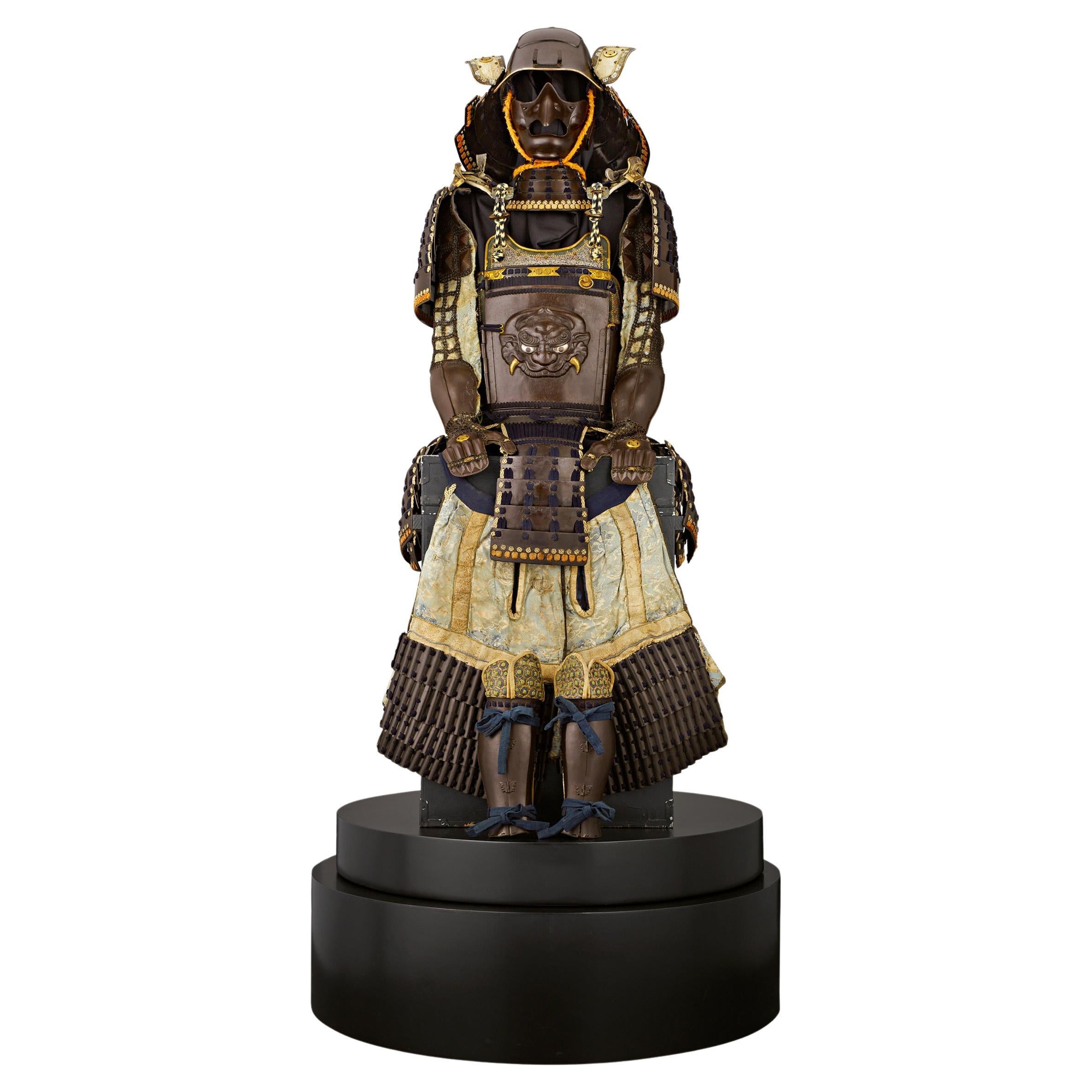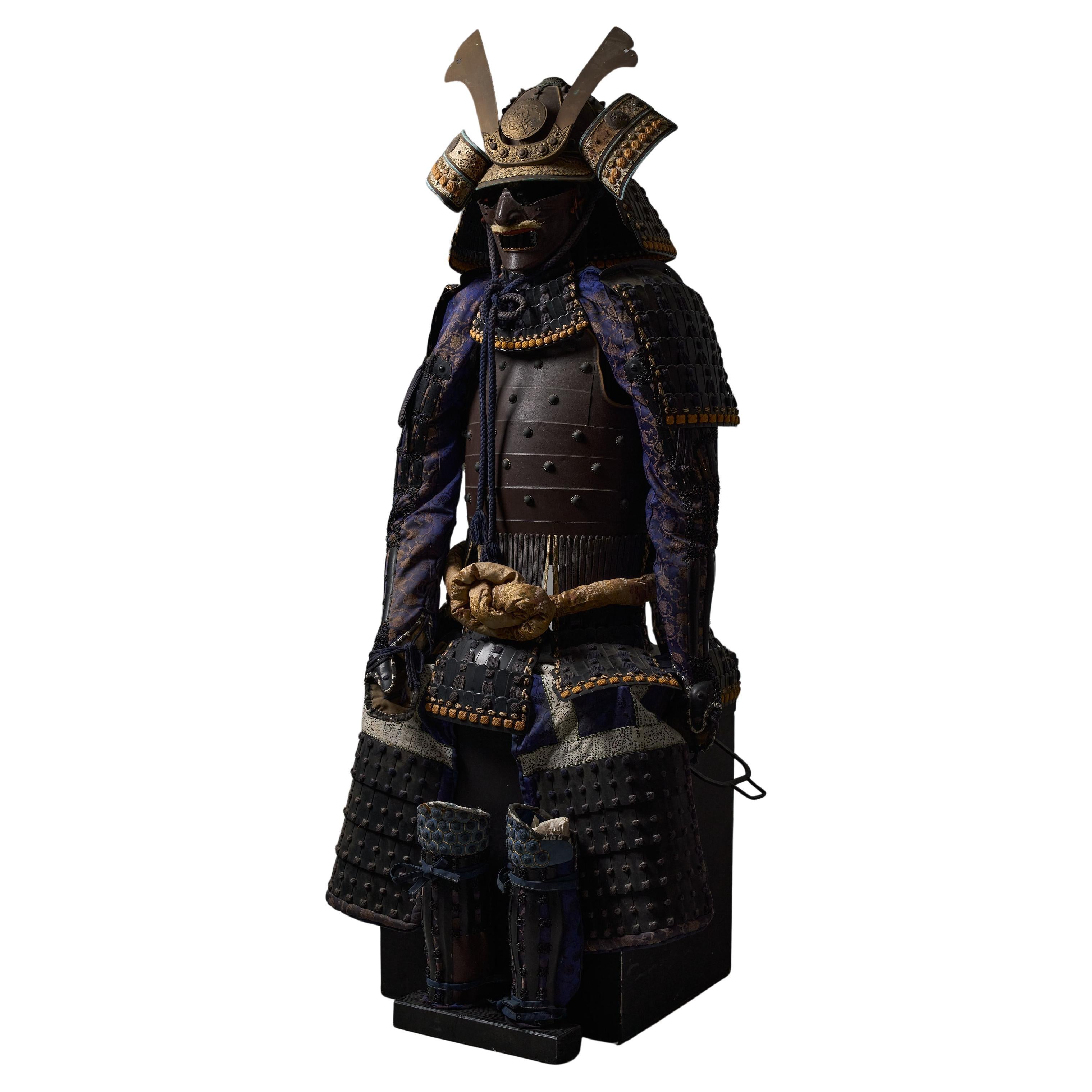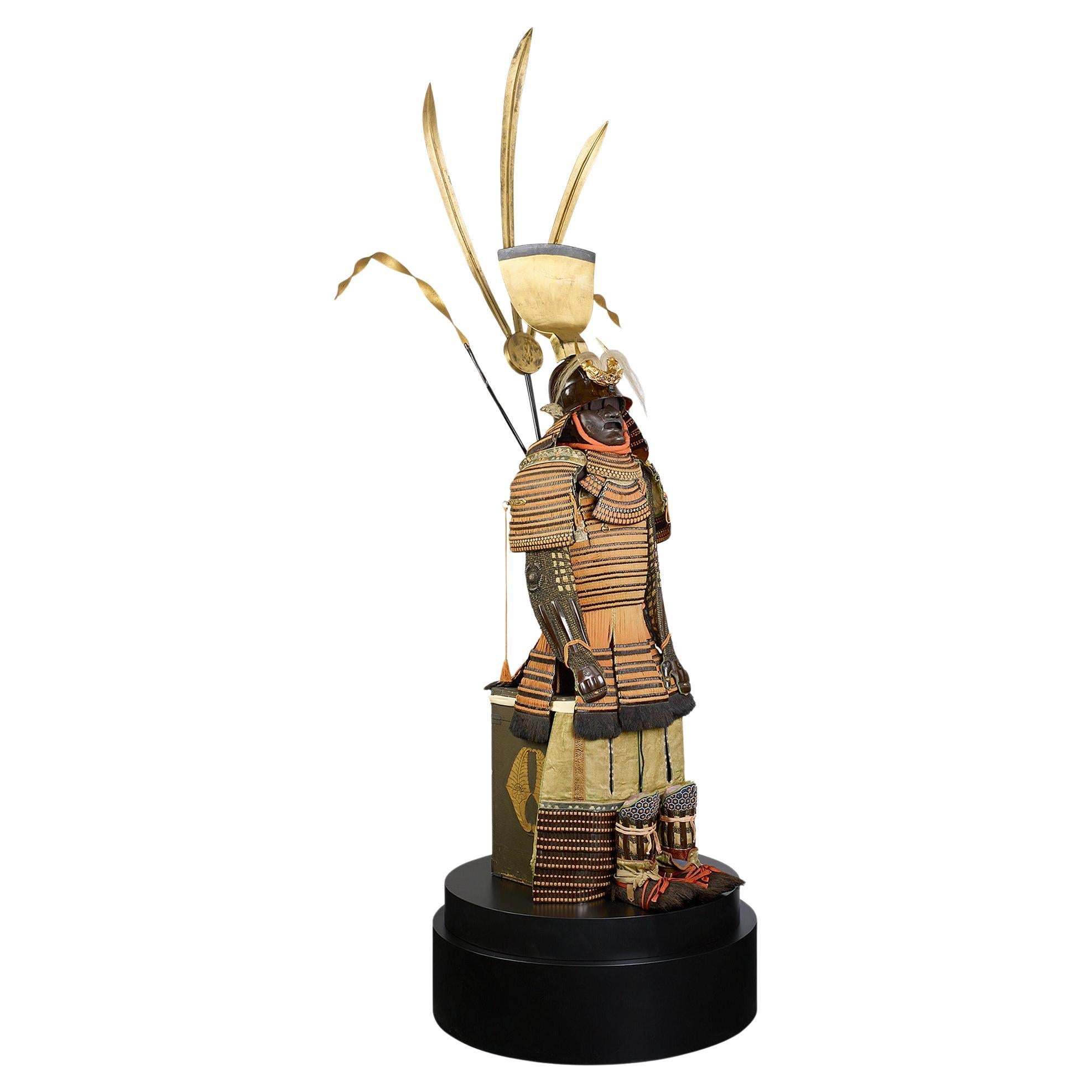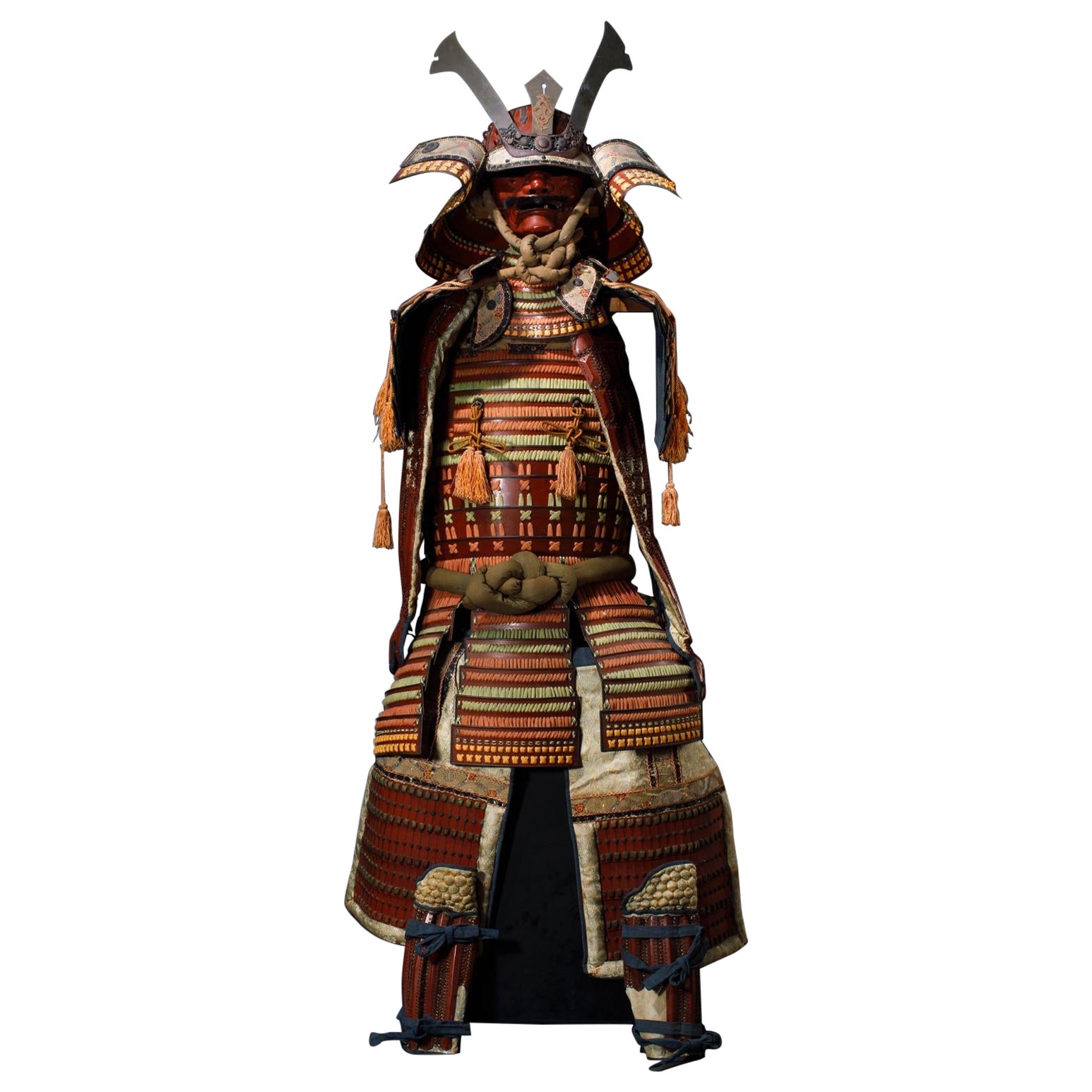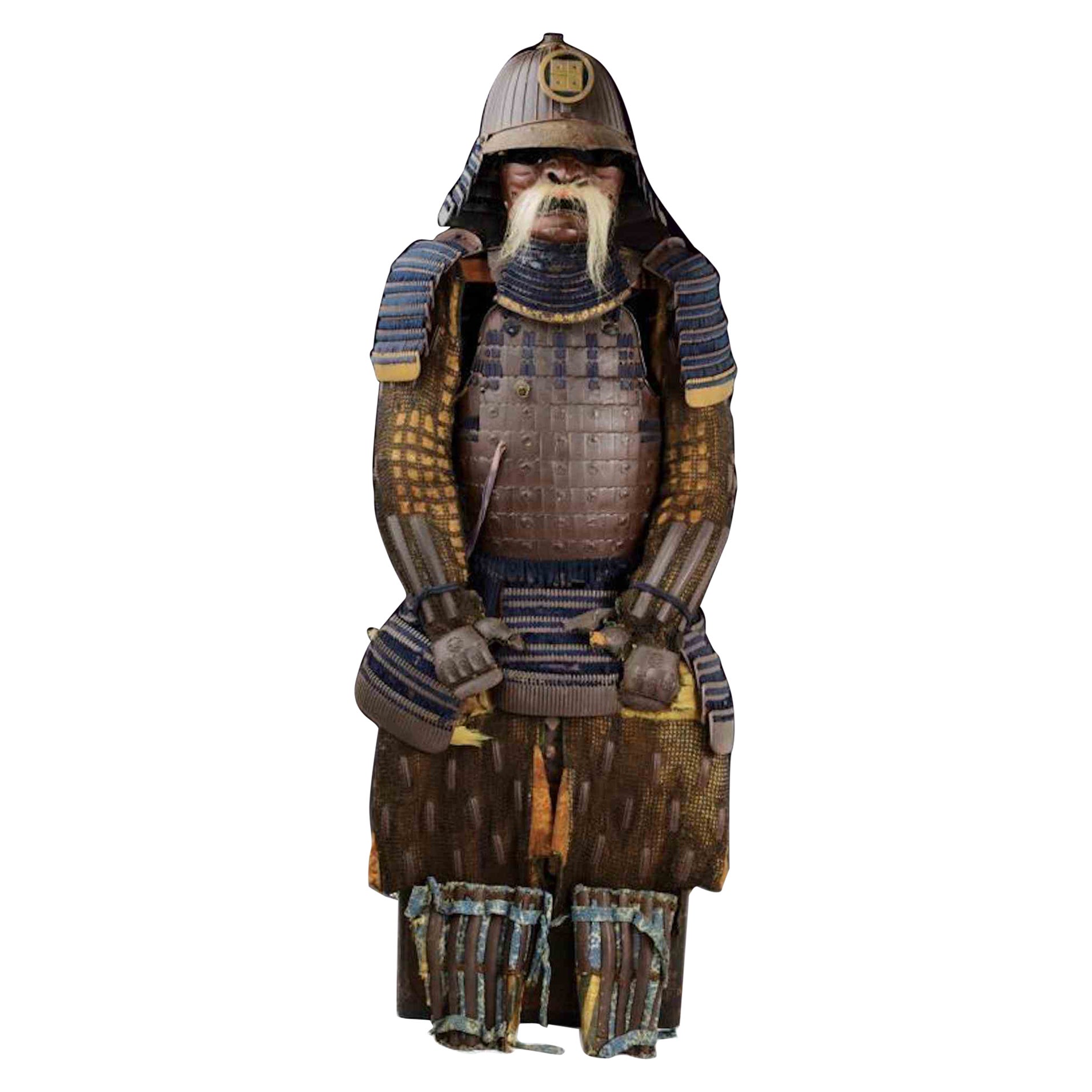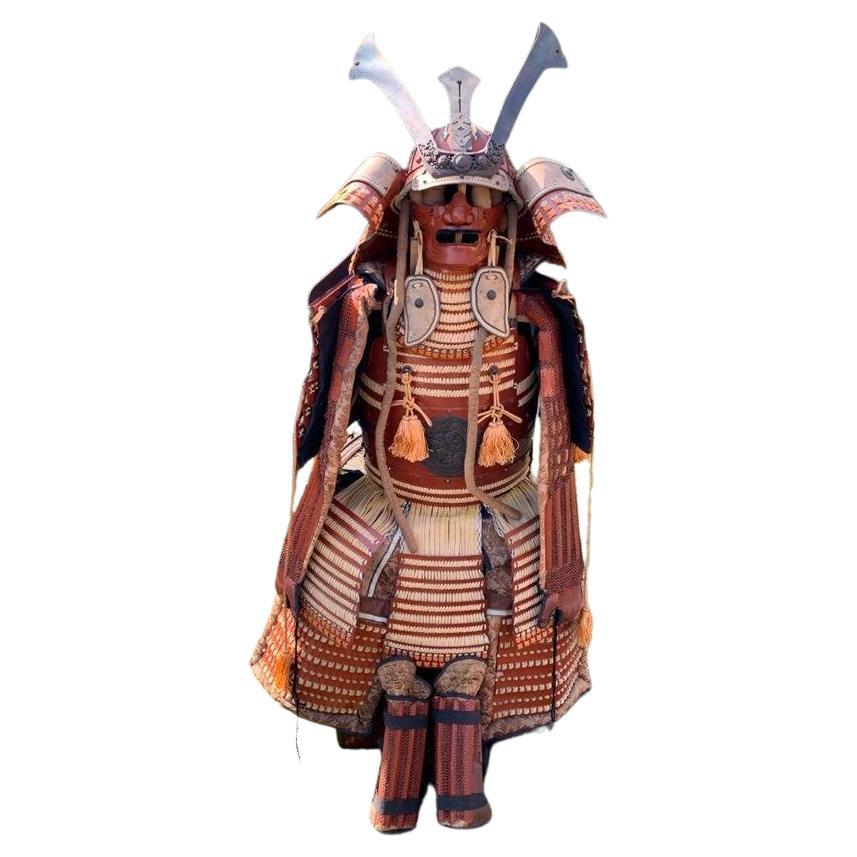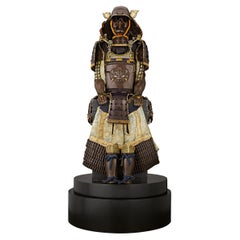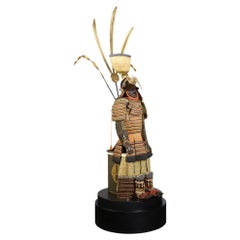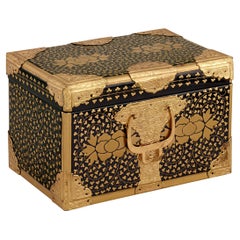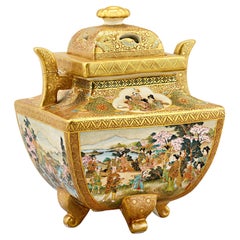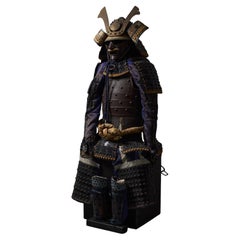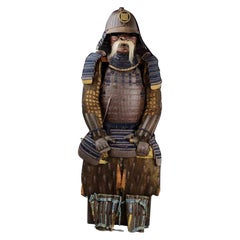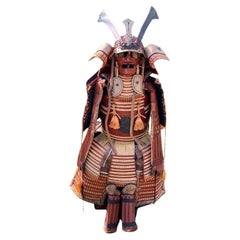Items Similar to Edo-period Green-Laced Samurai Suit
Video Loading
Want more images or videos?
Request additional images or videos from the seller
1 of 12
Edo-period Green-Laced Samurai Suit
$188,500
£143,132.52
€163,682.72
CA$263,361.83
A$292,915.85
CHF 152,951.55
MX$3,564,474.30
NOK 1,953,424.75
SEK 1,831,967.79
DKK 1,221,626.86
Shipping
Retrieving quote...The 1stDibs Promise:
Authenticity Guarantee,
Money-Back Guarantee,
24-Hour Cancellation
About the Item
This exceptional Moegi Odoshi Nimai-Dou Gusoku (Green Laced Armour), crafted in the 17th century, exemplifies the pinnacle of Edo-period samurai armor design and craftsmanship. Made from the finest materials available during this renowned period of Japanese history, this complete suit of armor embodies the traditional elegance and functional design characteristics of samurai martial attire. This type of armor would have been worn by an esteemed samurai of high social stature in the Ishikawa clan, based in Osaka.
Japanese armor is striking, refined and highly functional, crafted using revered techniques that evolved over centuries. By the Edo period (1615–1868), armorers were regarded as artists, proudly signing their contributions. This particularly elaborate example was created for a young warrior as he entered the ranks of a prestigious samurai official. In traditional samurai families, boys began rigorous training at a young age, receiving their first wooden sword at around three. By twelve, they would undergo a coming-of-age ceremony and be presented with a suit of armor like this one, signifying their official entry into samurai-hood.
Housed in its original lacquered paulownia wood box, this rare suit is complete and in pristine condition, a remarkable feat. It was made by the Iwai school of armor-making and features the Ishikawa clan's heraldry. The Ishikawa clan hailed from the former fiefdom of Ishikawa (present-day Osaka) and later served under the Tokugawa Shogunate. Notably, the helmet is signed by Neo Masanobu, a highly renowned armorer of the late 16th and early 17th centuries. It has been cherished for generations and meticulously maintained. A document discovered within the left shoulder guard reveals the armor's last restoration in 1790 by another Iwai school armorer, showcasing the ongoing care it received throughout history.
Embodying the warrior spirit and Japanese prestige in every detail, this suit is truly astonishing. Please see the complete list of exceptional features of this rare suit of armor below.
17th century
Suit: 58" high x 25" diameter
Base: 14 1/2" high x 35" wide x 34" deep
This complete suit includes:
Helmet (kabuto): with the following:
Bowl top fitted with a six-tier tehen kanagu (ventilation fitting) of mixed soft metals
Turnbacks (fukigaeshi): small, each carrying the heraldry of the Ishikawa clan in shakudo
Peak (mabisashi): embossed with crisp eyebrows and wrinkles
Fore Crest (maedate): small, in the form of a full moon
Face Mask (menpo): with black lacquered iron in ressei (fierce) style with embossing around the mouth and cheeks, mustache applied with gold lacquer and red lacquer interior
Cuirass (do): made of lacquered (honkozane): (real scales), decorated in shakudo heraldry on breastplate and backplate
Shoulder protection (gyoyo): made of iron
Collar (erimawashi): made in the European style of domestic chirimen silk
Skirt (kusazuri): made of six sections, each with five lames of kiritsuke kozane, with a front section with small hanagami bukoro (pouch) made of imported woolen fabric for money and medicine
Shoulder guards (sode): made of kiritsuke kozane, each composed of seven lames and lined in purple silk
Sleeves (hyotan gote): made of corrugated iron gourd-shaped applications with kirigane (open-cut iron work) Ishikawa clan heraldry in twelve places
Thigh protection (haidate): made of black lacquered leather with overlapping scales
Shin Guards (shino suneate): made of black lacquered iron strips connected with chain mail
Entire armor lined with purple silk with Tokugawa clan heraldry in gold thread
Gloves (gunte) are original doe-skin, carrying the heraldry of the Ishikawa clan
Shoes made of hemp and chain mail, same weave as the sleeves
Straw sandals (waraji)
- Dimensions:Height: 58 in (147.32 cm)Width: 25 in (63.5 cm)Depth: 25 in (63.5 cm)
- Style:Edo (Of the Period)
- Materials and Techniques:
- Place of Origin:
- Period:
- Date of Manufacture:17th century
- Condition:
- Seller Location:New Orleans, LA
- Reference Number:Seller: 31-96421stDibs: LU891141148582
About the Seller
5.0
Recognized Seller
These prestigious sellers are industry leaders and represent the highest echelon for item quality and design.
Established in 1912
1stDibs seller since 2010
109 sales on 1stDibs
Typical response time: 4 hours
- ShippingRetrieving quote...Shipping from: New Orleans, LA
- Return Policy
Authenticity Guarantee
In the unlikely event there’s an issue with an item’s authenticity, contact us within 1 year for a full refund. DetailsMoney-Back Guarantee
If your item is not as described, is damaged in transit, or does not arrive, contact us within 7 days for a full refund. Details24-Hour Cancellation
You have a 24-hour grace period in which to reconsider your purchase, with no questions asked.Vetted Professional Sellers
Our world-class sellers must adhere to strict standards for service and quality, maintaining the integrity of our listings.Price-Match Guarantee
If you find that a seller listed the same item for a lower price elsewhere, we’ll match it.Trusted Global Delivery
Our best-in-class carrier network provides specialized shipping options worldwide, including custom delivery.More From This Seller
View AllEdo Period Samurai Suit Of Armor
Located in New Orleans, LA
This exquisite Tetsusabiji Uchidashi Gomai Dou Gusoku (Five-Plate Russet Iron Embossed Cuirass Armor), crafted in the 18th century, exemplifies the pinnacle of Edo-period samurai arm...
Category
Antique 18th Century Asian Edo Arms, Armor and Weapons
Materials
Copper, Iron
$188,500
Edo-period Orange-Laced Samurai Suit
Located in New Orleans, LA
For samurai warriors, the functionality of their armor was as vital as its striking beauty—both elements held equal importance. This orange-laced armor is one of the rarest and most stunning complete Edo-period samurai suits ever crafted, designed for a military leader to convey the gravity of his power and warrior spirit at a single glance.
This particularly rare armor...
Category
Antique 18th Century Asian Edo Arms, Armor and Weapons
Materials
Copper, Iron
Edo-Period Lacquerware Chest
Located in New Orleans, LA
Edo-Period Lacquerware Chest
19th-century
This exquisite chest, inspired by Hasami-Bako travel trunks, is a striking example of Japanese lacquerware. The hiramaki-e technique—applie...
Category
Antique 19th Century Japanese Edo Decorative Boxes
Materials
Gold
Satsuma Incense Burner
Located in New Orleans, LA
This Japanese Satsuma incense burner is a decorative work of art from the Meiji period, distinguished by its exquisite craftsmanship and intricate detailing. Made from fine earthenwa...
Category
Antique 19th Century Japanese Meiji Ceramics
Materials
Earthenware
$3,450
South American Presentation Sword
Located in New Orleans, LA
Believed to have originated from the collection of a South American diplomat, the exquisiteness of this presentation sword conveys its ownership by ...
Category
Antique 19th Century South American Other Arms, Armor and Weapons
Materials
Steel, Brass, Bronze
$48,500 / set
Satsuma Bowl of Immortals
Located in New Orleans, LA
This highly detailed Satsuma bowl is adorned with Buddhist monks and signed “Hododa” on the underside. The columns on the underside read, “Satsuma” and “Hododa.” This represents the ...
Category
Antique 19th Century Japanese Meiji Decorative Bowls
Materials
Gold
You May Also Like
Samuraï armor
Located in Brussel, BE
Amazing and unique Samuraï armor.
End of XIXth century, early XXth century.
Nimai do Okegawa gusoku (2 plate with barrel form cuirasse armor).
Composed o...
Category
Antique Late 19th Century Japanese Japonisme Antiquities
Materials
Iron
$29,953
Samuraï armor
Located in Brussel, BE
Amazing and unique Samuraï armor.
Early XXth century.
Composed of an iron helmet mounted with large standing rivets and "Kuwagata" decoration (shoe shaped decoration) on the front. R...
Category
Early 20th Century Japanese Japonisme Antiquities
Materials
Iron
$29,953
A Tosei Gusoku (Samurai's Armour), 17th Century
Located in Roma, IT
Belonging to the period 1603-1867, most likely between the end of 17th and the beginning of 18th Century, this beautiful armour is a 32-plate suji kabuto made of brown-lacquered iron...
Category
Antique 17th Century Japanese Figurative Sculptures
Materials
Metal, Iron
Japanese Red Samurai Armour Beginning of Meiji period 1900s
Located in Paris, FR
This is an armour of samurai. It was made around 1900s in Meiji era. This armour was not used in actual war so it was made as decoration, because of that, it is in good condition as its age.
There are some scratches and missing parts, if you need some more information, please let us know, we will respond you as soon as possible and send more photos.
This armour can be folded in a box. The box is getting damaged so it is not in good condition. We might send this armour in other box.
Dimensions: 50 x 50 x H170 cm
Scholars agree that Japanese armour first appeared in the 4th century, with the discovery of the cuirass and basic helmets in graves. During the Heian period, the unique Japanese samurai...
Category
Antique Early 1900s Japanese Meiji Antiquities
Materials
Metal, Iron
Japanese Boy's day display suit of armor
Located in Point Richmond, CA
Antique Japanese miniature model of a suit of armor made for the Boy’s day display. Constructed of a lacquered paper cuirass, upper arm guar...
Category
Antique 1850s Japanese Edo Sculptures and Carvings
Materials
Textile, Wood, Lacquer, Paper
18th Century Hirate Clan Samurai Armor with Signed Kabuto Helmet
Located in Fukuoka, JP
This is a truly exceptional set of 18th century Samurai armor that is sure to impress any collector or enthusiast. The patinated iron used in its construction has aged beautifully, giving the armor a truly unique appearance that is sure to catch the eye. The brocade silk and cotton padding used to line the armor not only provide a comfortable fit for the wearer, but also add an extra layer of decorative flair.
One of the most striking features of this armor is the crests of the Hirate samurai clan that adorn it. These crests are a symbol of the clan's identity and heritage, and their presence on the armor speaks to the deep connection between samurai warriors and the clans they belonged to.
The Kabuto...
Category
Antique 18th Century Japanese Antiquities
Materials
Iron
More Ways To Browse
Antique Lace
Japan Samurai
Antique Shoe Form
Family Crest Wood
Antique Japanese Sword
Antique Japanese Swords
Antique Hemp
Antique Leather Shoes
Japanese Red Lacquer Box
Antique Mail Boxes
Gold Lame Fabric
Antique Metal Shoe
Antique Wooden Shoe
Gold Lame Skirt
Japan Armor
Japanese Armour
Japanese Document Boxes
Edo Samurai
